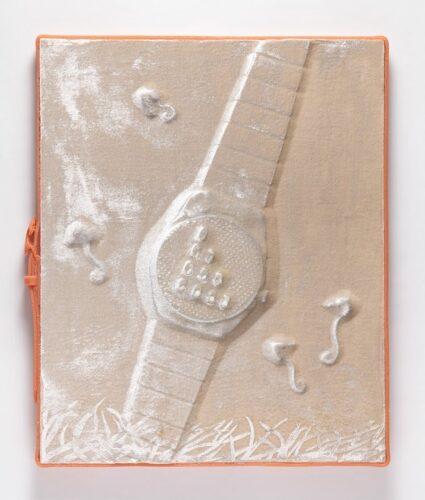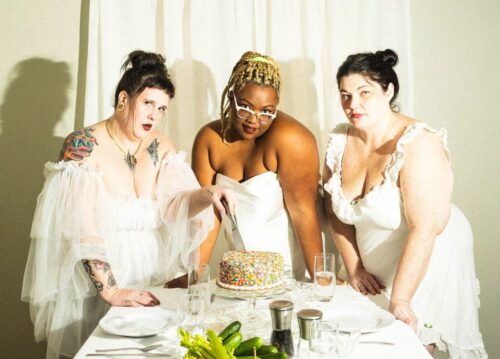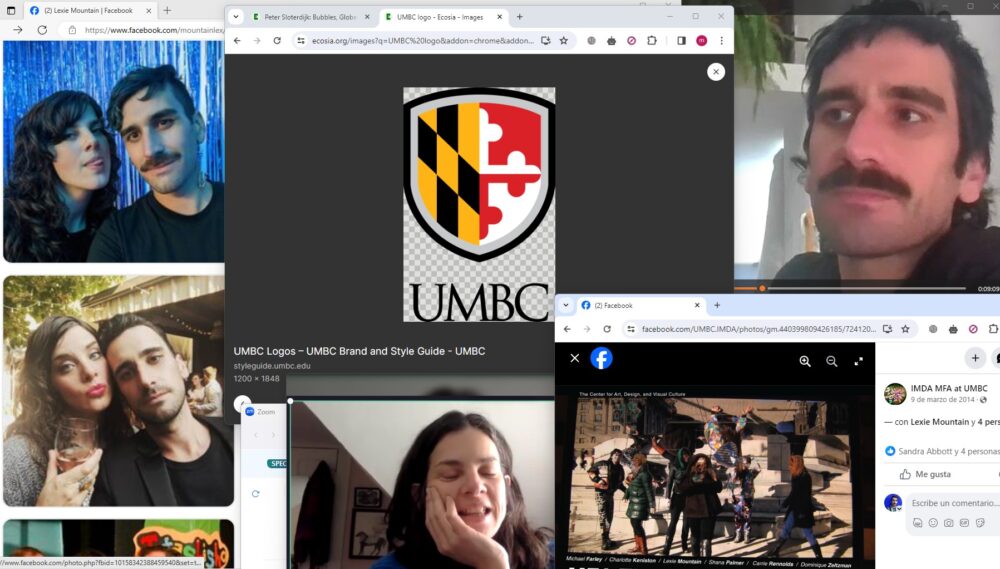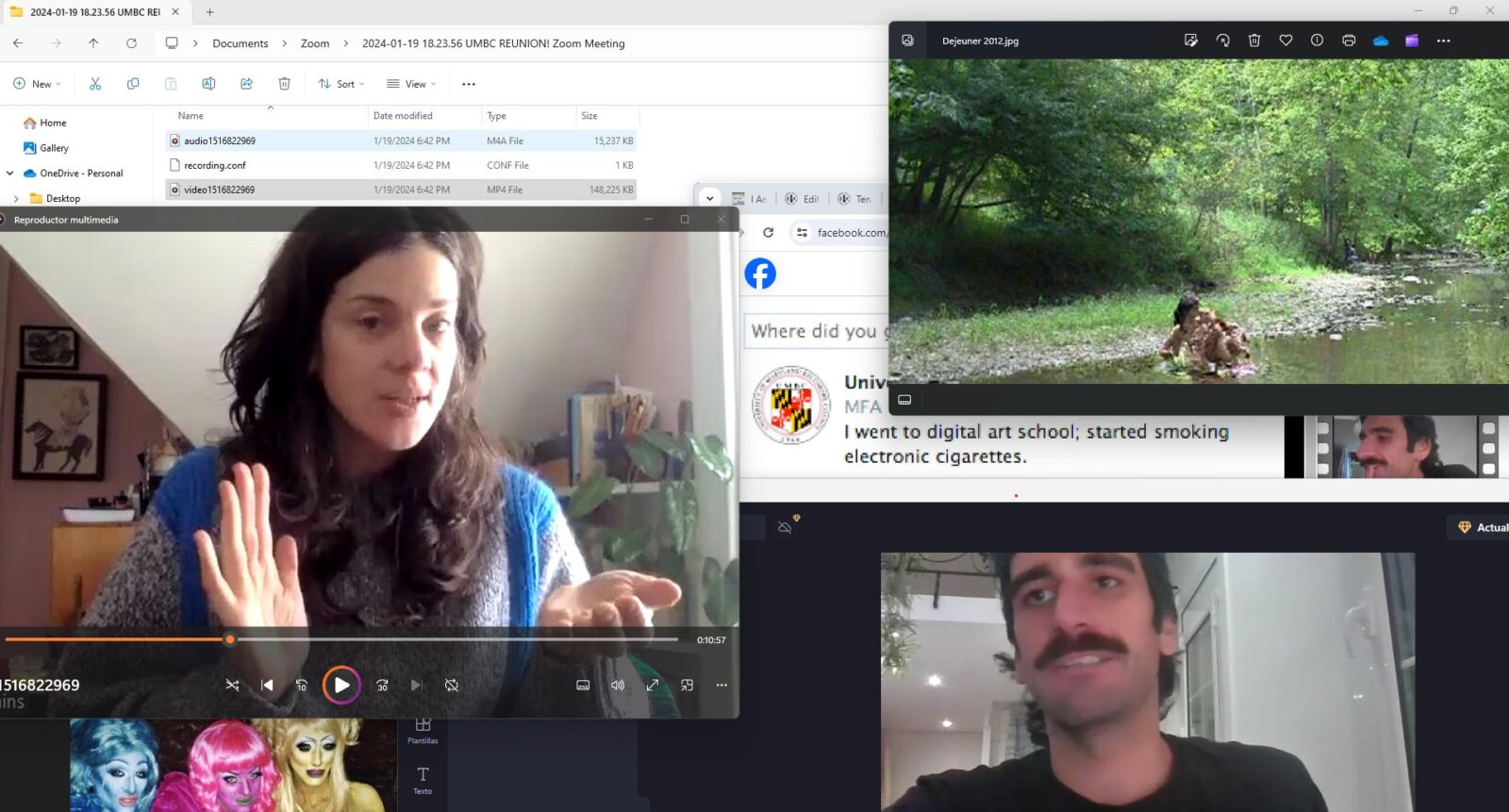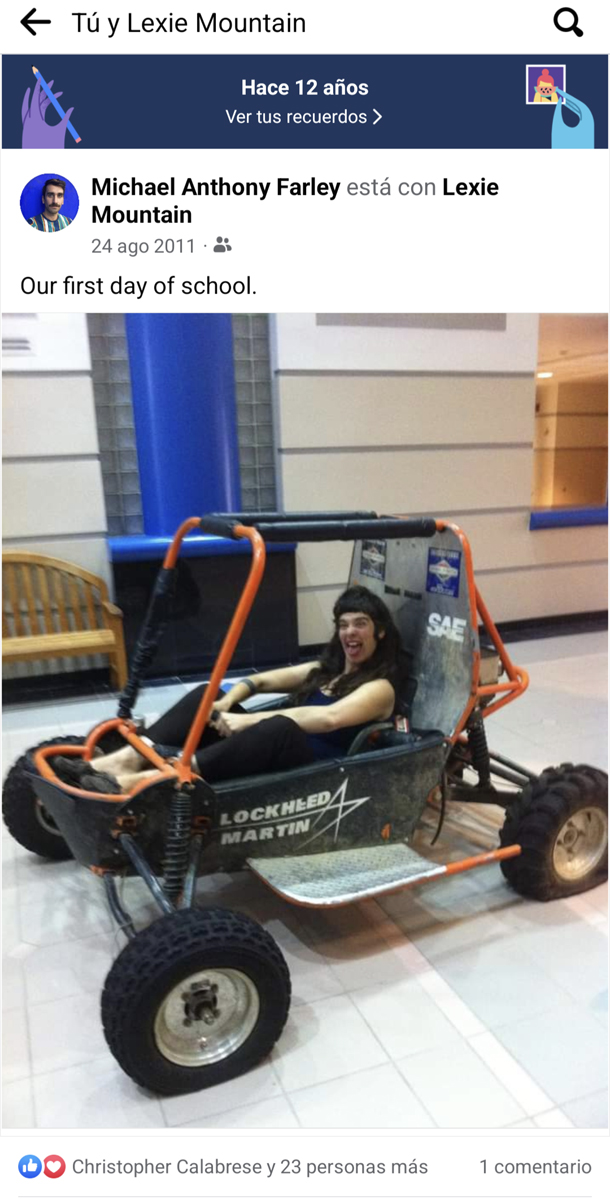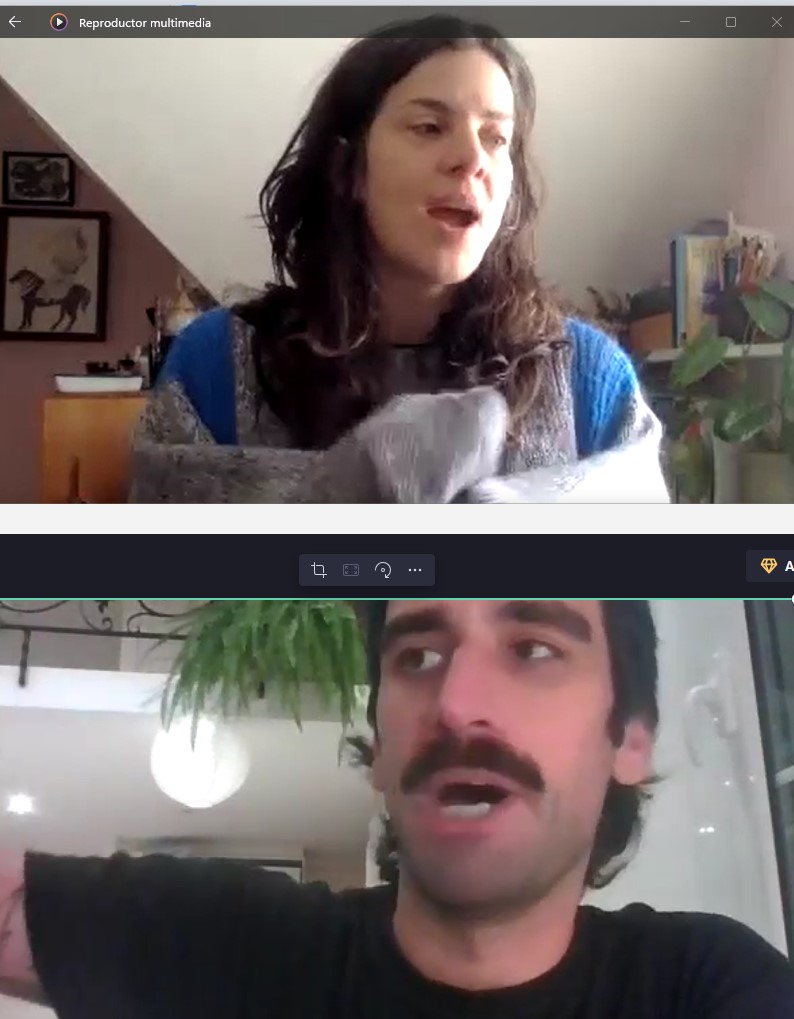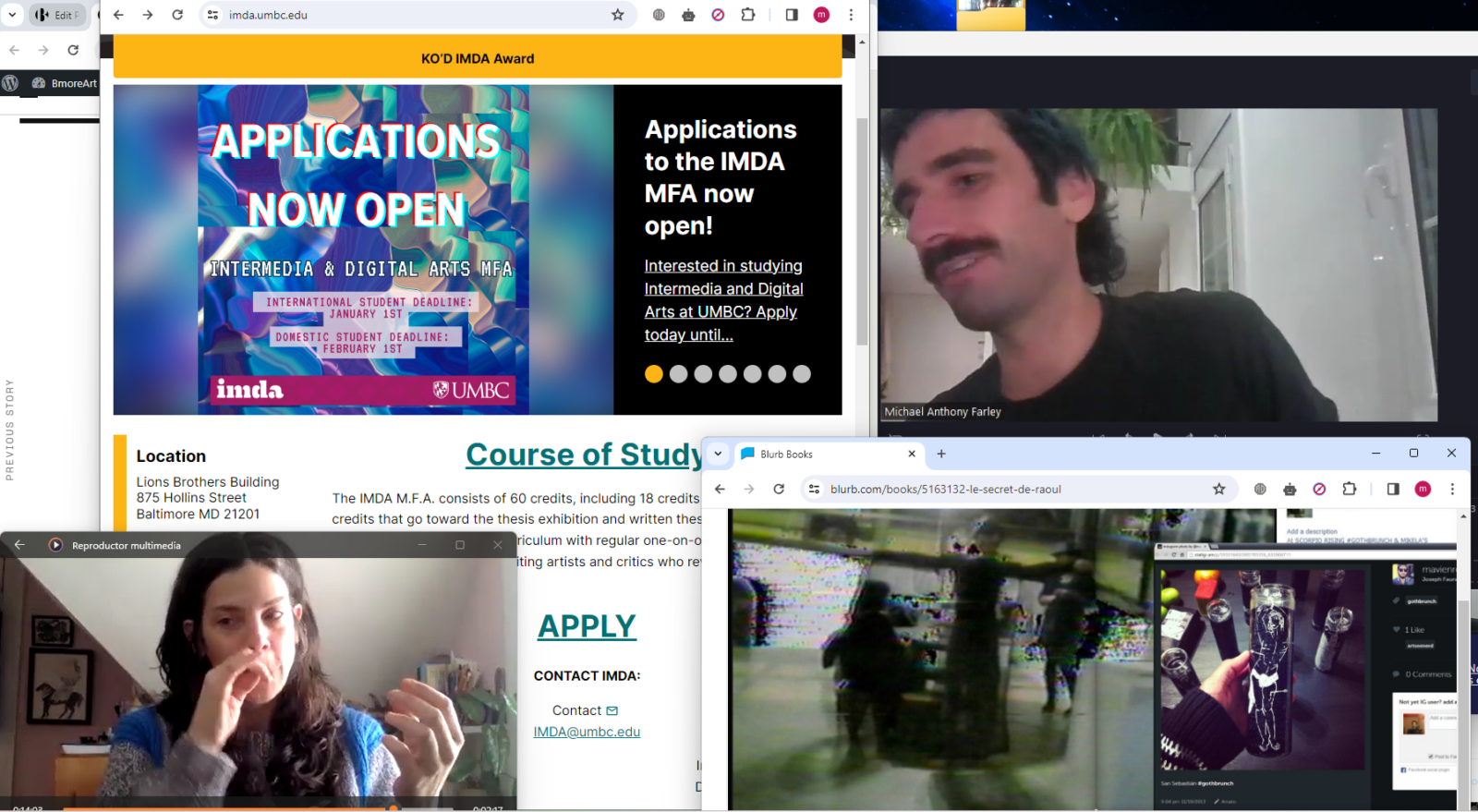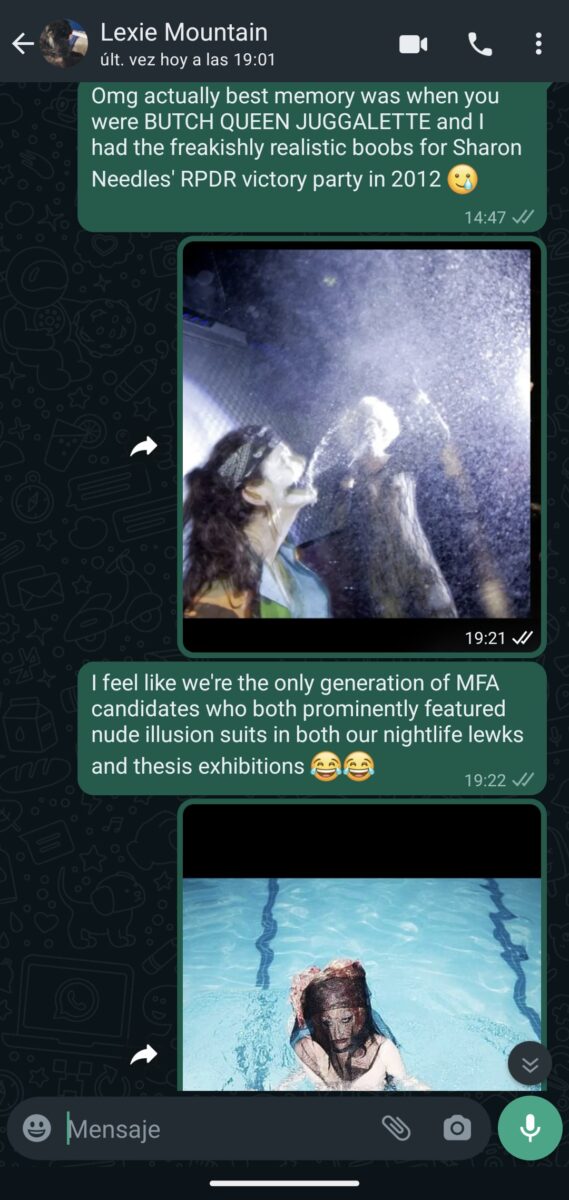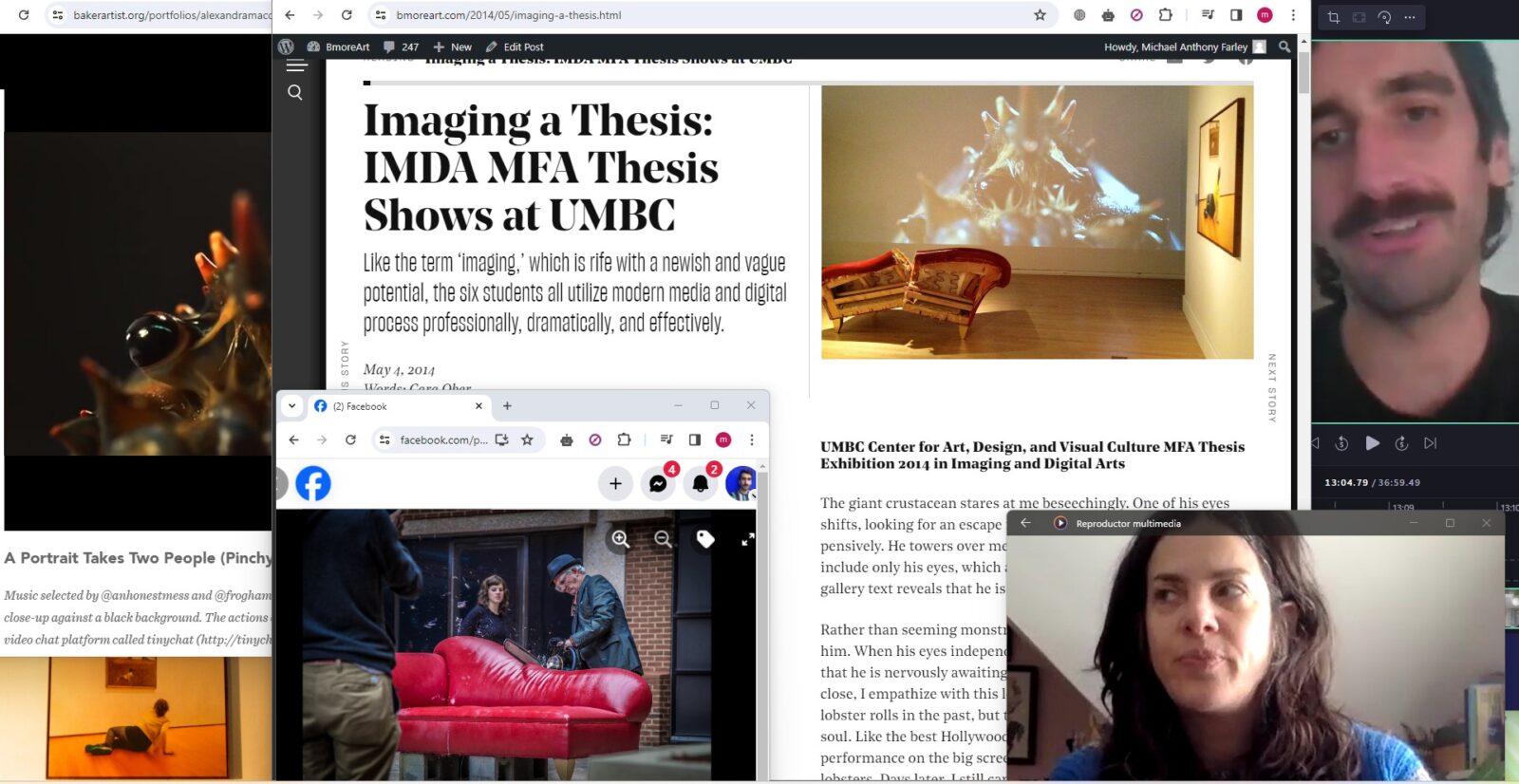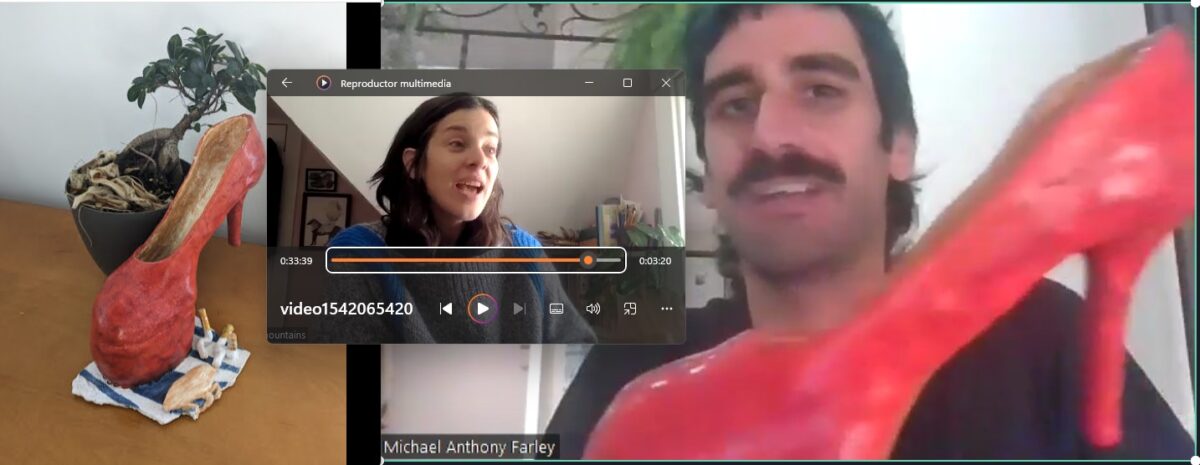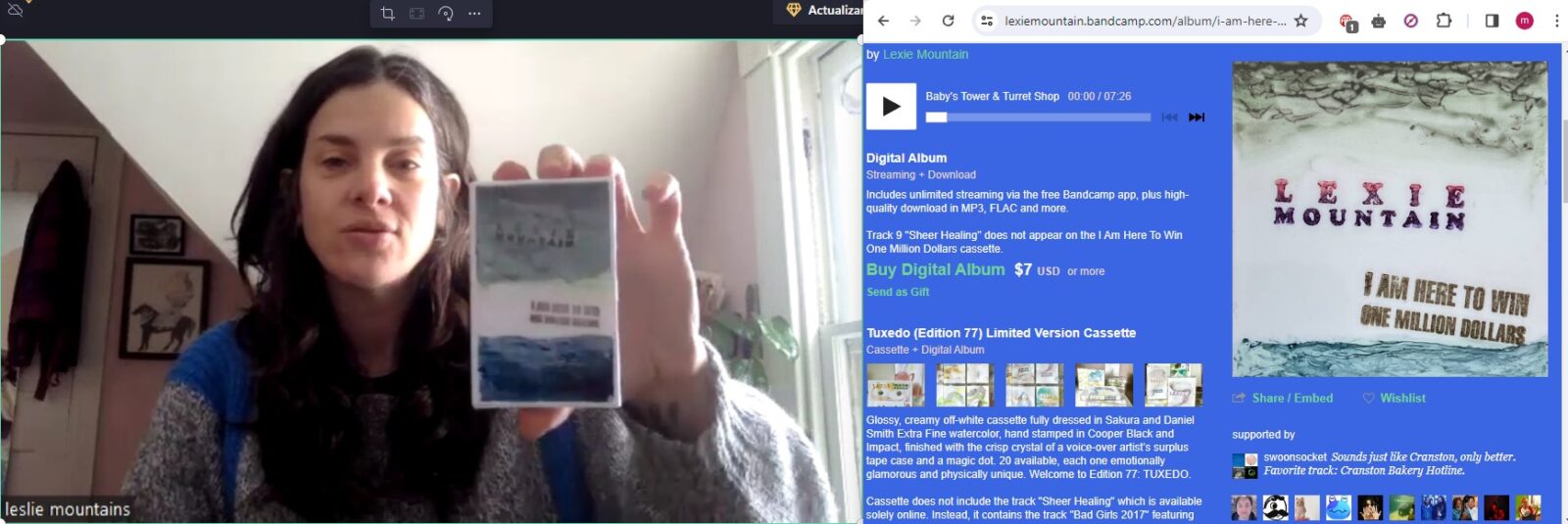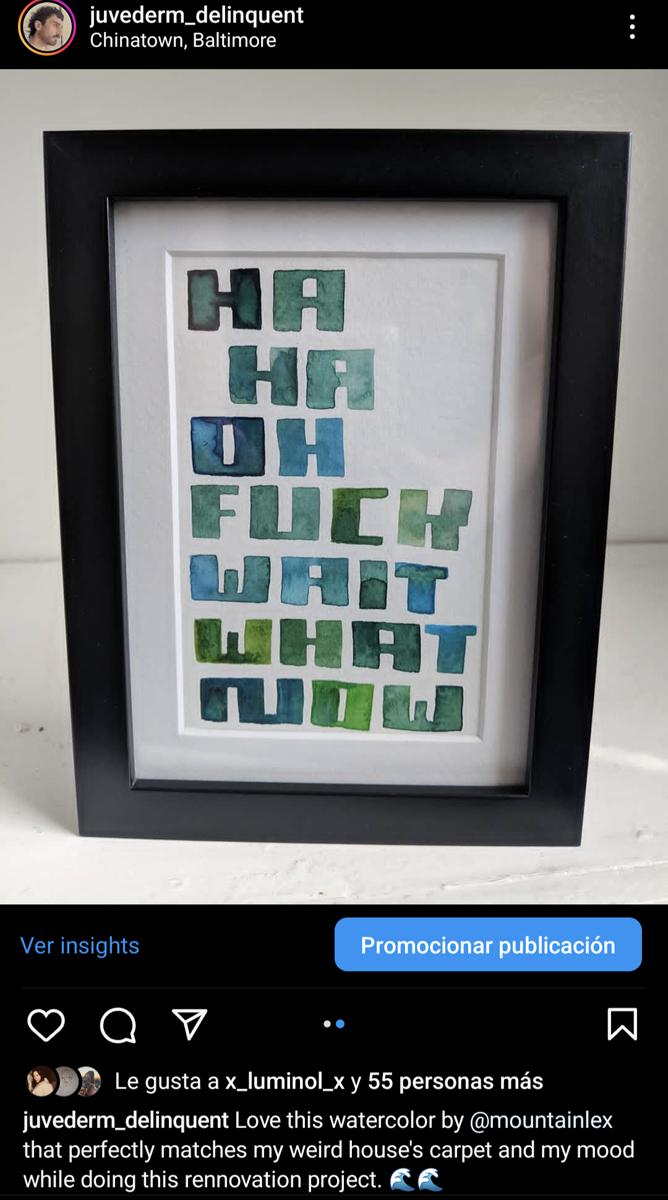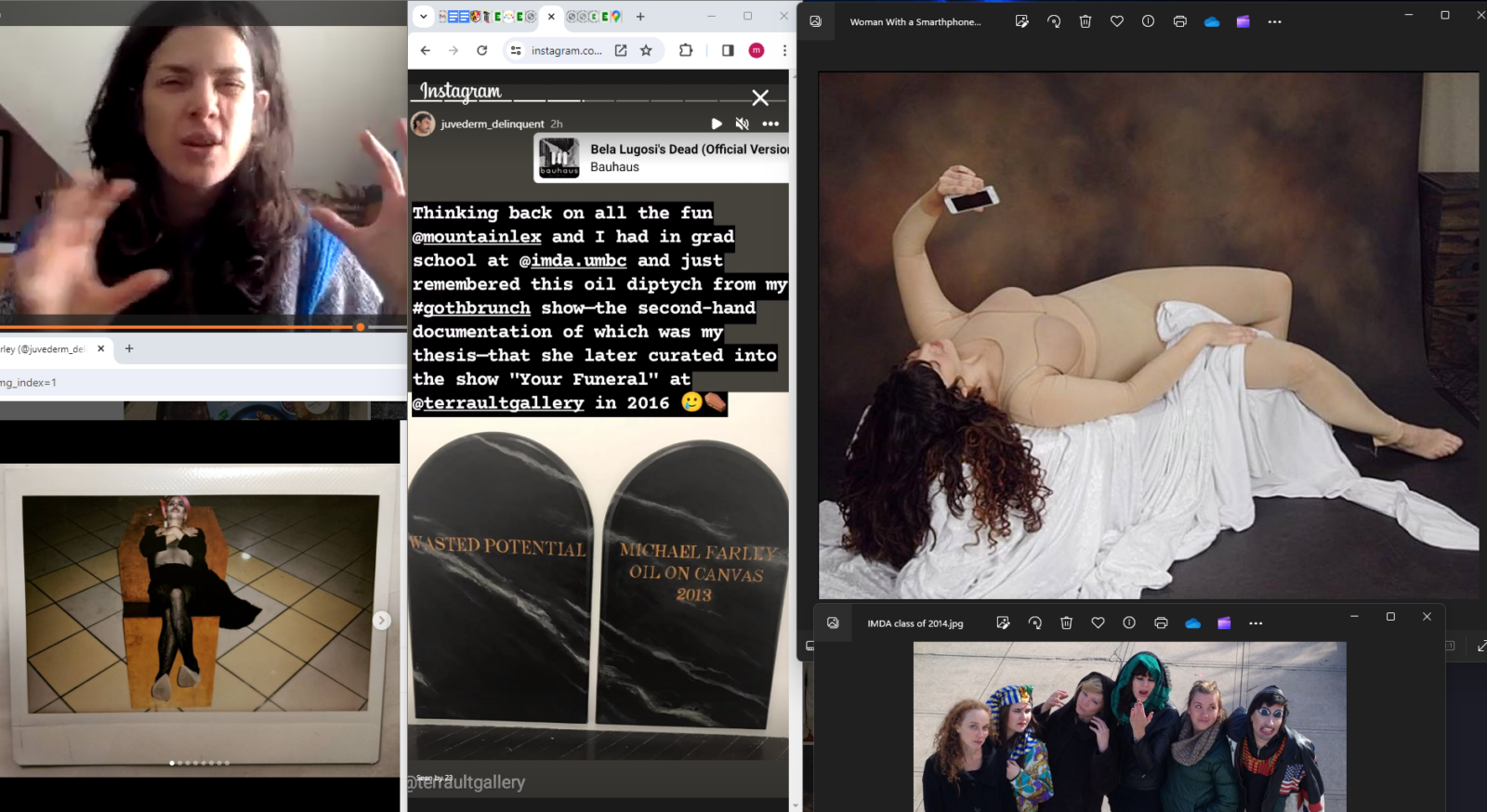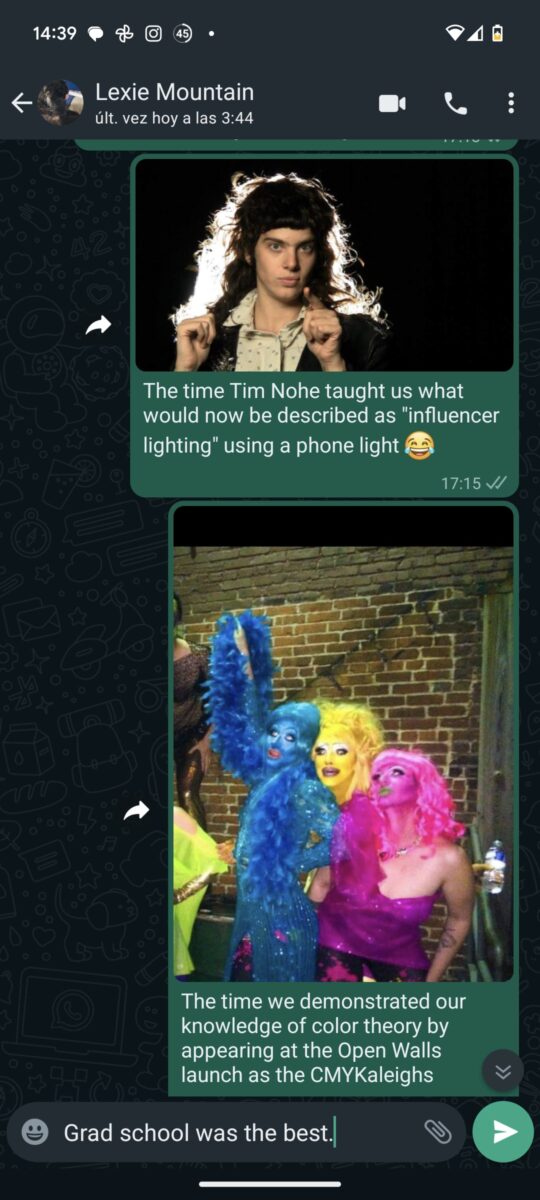Exactly a decade ago, you almost certainly could’ve found me hunkered-down in a cavernous industrial space on the corner of Wicomico and Cross streets, indexing hundreds of hours of grainy gallery surveillance camera footage and blurry Fuji Instax photos from a series of performances and exhibitions. A few cubicles over, one of my best friends was arranging digital prints of glitchy video stills and slathering fire-engine red acrylic paint onto a fainting couch we had salvaged from a very surreal divorce sale at a McMansion in Montgomery County a few weeks before with a borrowed van.
We were probably shivering, somewhat sleep deprived, and subsisting on a diet of crappy bodega coffee and improbably good takeout from the underrated Ethiopian spot run out of a sign-less rowhouse living room around the corner. At the time, I probably wouldn’t have believed I’d be looking back on those cold January late-nights nostalgically, but here we are.
Lexie Mountain and I were preparing our MFA thesis exhibitions from the former UMBC graduate studios in Pigtown, wrapping-up our transformative three-year stint in the Intermedia and Digital Arts (IMDA) program. Much like those heaping $8 clamshells of homemade injera and perfectly seasoned legumes, I think of IMDA as one of Baltimore’s best-kept secrets.
Ten years later, both that takeout place and the graduate program have moved. IMDA now boasts swankier, better-heated facilities in the Lion Brothers Building a fifteen minute walk north, but it still feels like one of those in-the-know, word-of-mouth gems. And a decade later, I still feel like I got my money’s worth—I’m sated, with leftovers comprising skills, connections, and a library of theory PDFs I find myself picking at to this day, wrapped in the warm, spongy goodness of fond memories.
So when UMBC reached out to BmoreArt to help spread the word about the program, I thought immediately about Lexie and our decision to apply together years ago. The current round of applications for IMDA close on February 1st, and I thought it would be useful for potential candidates to read about our experiences in the program. We caught up over Zoom (because we’re Masters of the Digital, now, duh!) and we’ve shared a lightly-edited transcript of that conversation.
